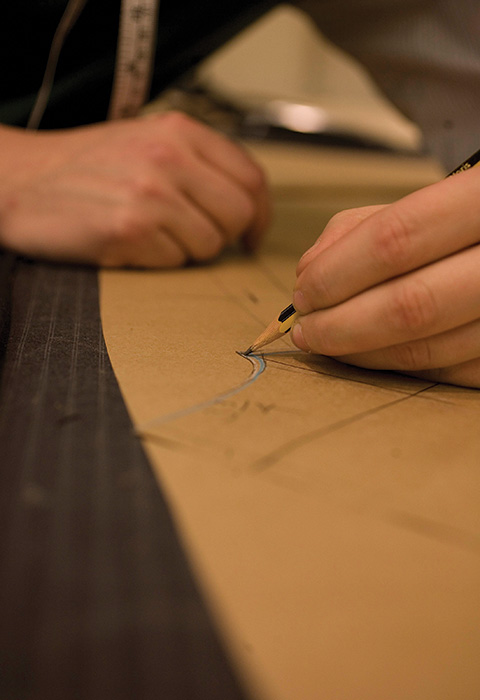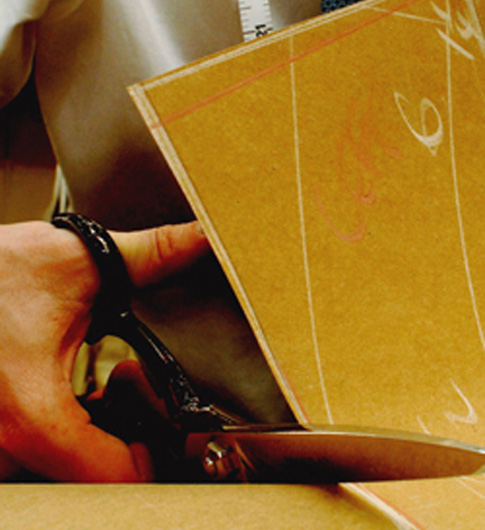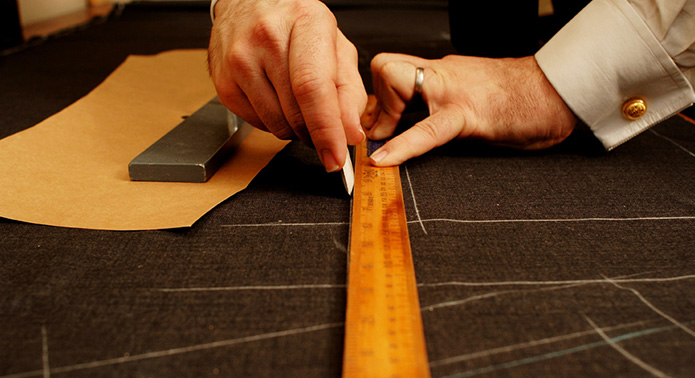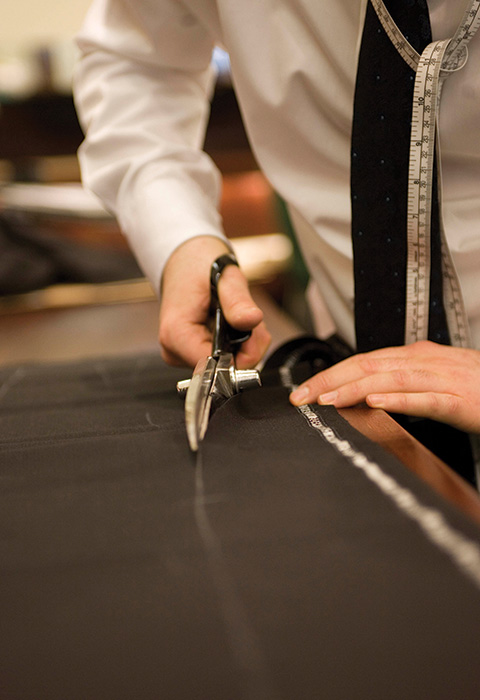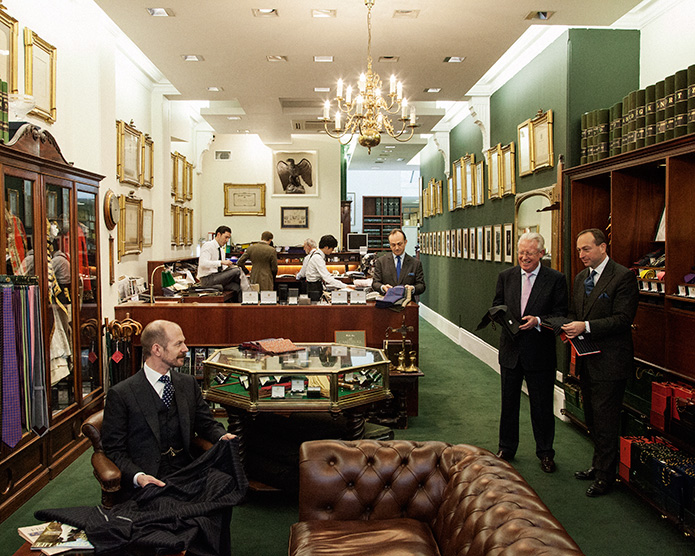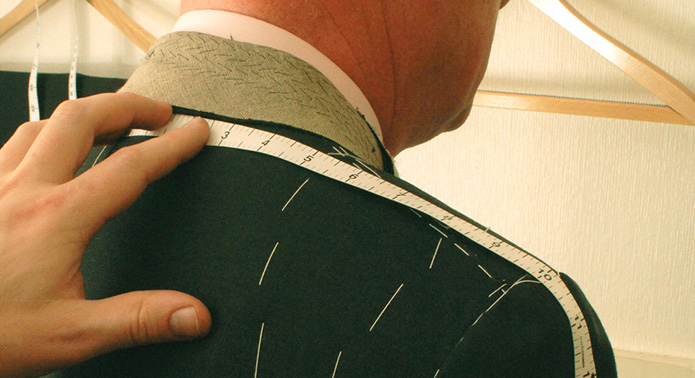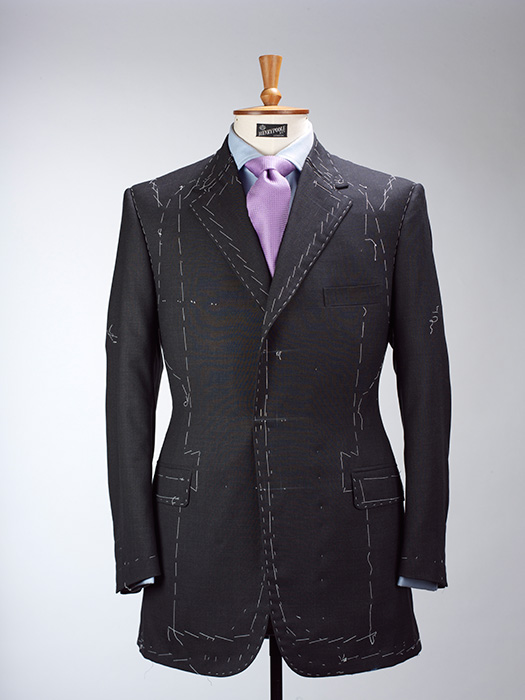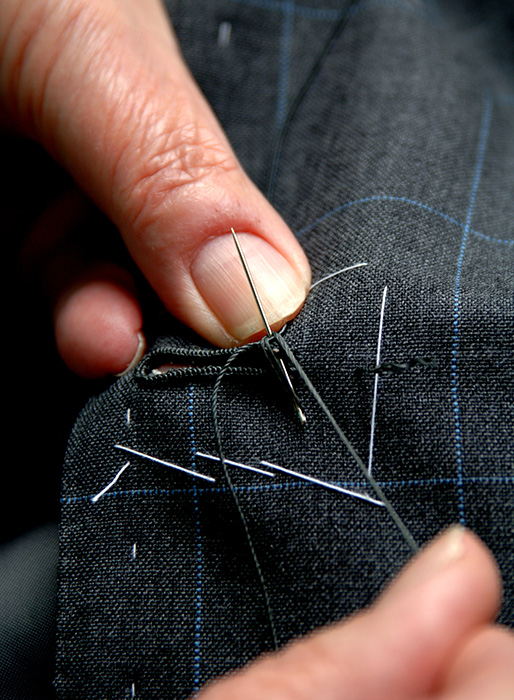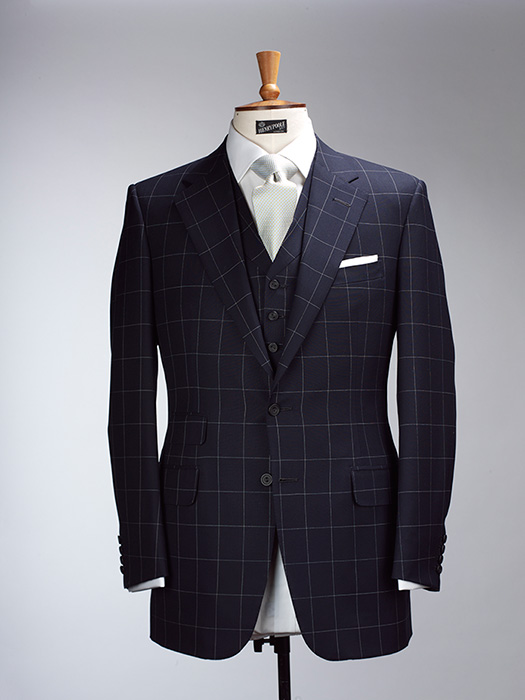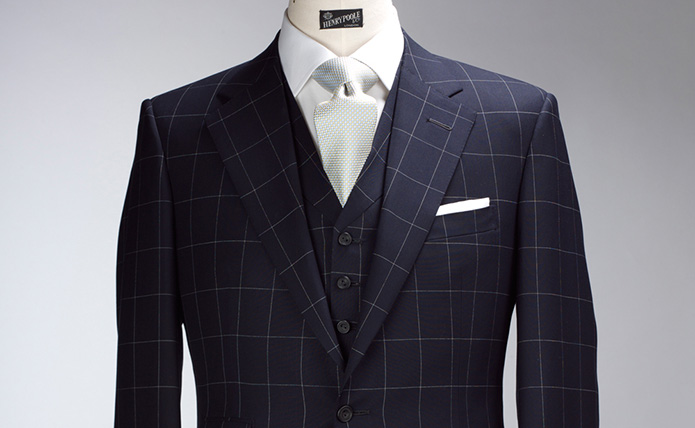
Image courtesy of Henry Poole & Co (Savile Row) Ltd
Savile Row may be one of the most powerful brands for menswear anywhere in the world, but few understand it. It conjures up, perhaps, a sketch of an English gentleman: dapper and exceedingly neat, standing in the doorway of his tailor, glancing upwards for any signs of rain before striding out onto the thoroughfare. He is confident, composed and controlled: the very picture of elegance.
That man has been used to sell men’s clothing the world over, from a Ralph Lauren store in San Francisco to a back-street tailor in Hong Kong, for nigh-on 100 years. But other than the silhouette, there is little real connection between it and Savile Row.
Because Savile Row is about craft. It is about the way a suit is cut and the way it is made – more so even than the way it looks. Style changes and it revolves, in ever-quickening circles. The fundamentals of a hand-cut, hand-sewn suit does not.
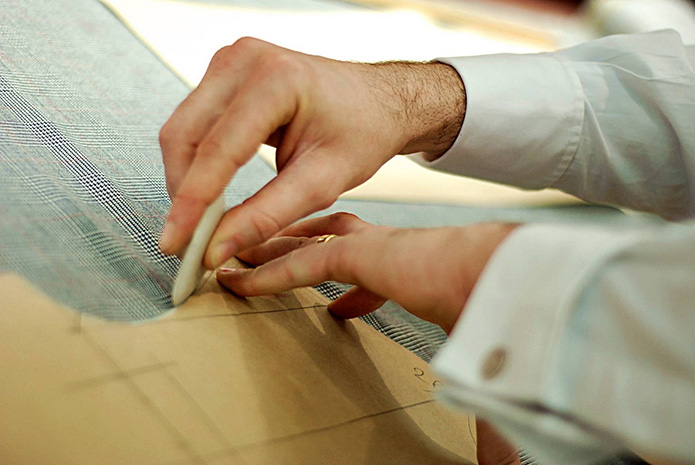
Double-breasted suit being made at Henry Poole in Prince of Wales check cloth. Image courtesy of Simon Crompton
The make
If there is an essence to the Savile Row suit, it is the half dozen or more pieces of brown paper that hang in a tailor’s vault, each marked with your name and looped together with a piece of white string. They represent the parts of your suit, as drawn out by a cutter and painstakingly adjusted over a series of fittings – perhaps even over a life, as a man changes, warps and shrinks.
That individual paper pattern is what differentiates a bespoke suit from one bought off-the-rack, or ‘made to measure’ (which normally means constructed abroad by someone you will never meet). And bespoke suits are what define Savile Row.
The process launched a thousand tailors around the world, and other centres of excellence – most notably in Italy. But it all started on the Row, and no one can call themselves a Savile Row tailor if they use any other method (it is so much more important than the house’s actual address).
The way the suit is then put together – by the actual ‘tailors’, a coatmaker and a trousermaker – is important too. The hand-sewn chest of the jacket creates a rounded, natural shape that is unique to you, and will never be found outside bespoke. The careful insertion of a large sleeve into a small armhole creates comfort that can only be achieved through slow, methodical handwork.
But it is the fit of bespoke that is the most instantly noticeable and enduringly gratifying. That comes through the cutter and his manipulation of cloth and brown paper.
The tailors
Rightly, those cutters are therefore the most revered people on the Row. In recent years, several have successfully established houses in their own name. Richard Anderson, for example, was the head cutter at Huntsman before he set up at number 13 Savile Row. Steven Hitchcock, son of the Anderson & Sheppard head-cutter John Hitchcock, now has his own premises on St George’s Street. And three old favourites – John Kent, Terry Haste and Stephen Lachter – are now on Sackville Street.
The three giants of the Row are Anderson & Sheppard, Huntsman and Henry Poole. They have been the biggest houses for decades, and despite some volatility (particularly at Huntsman) have managed to retain their reputation. Key to that has been consistent cutters, or at least a consistent philosophy to cutting. Others have floundered as cutters came and went, or simply refused to adapt to modern media and modern customers.
It is easy to be intimidated by such giants of tailoring. They have their reputations and their history, and there is usually a stag’s head or a military uniform hanging around to remind you of it. But the people inside are usually approachable and happy to help. They may be more attentive to a customer of 30 years than a young man in jeans and trainers, but then you can hardly blame them for that.
The process
Once engaged, these assistants (often referred to as ‘front of house’) will happily walk you through the process of having a suit made, and of ordering one. It will likely take 3-6 months for the first one, and require you to visit another 3 or 4 times.
On that initial visit, you will be measured and select your material (from hundreds of options). There will then be at least two fittings, with the suit gradually looking more and more final at each stage.
At the beginning the purpose of the fitting is for the tailor to get the balance and the proportion of the suit right.
As the fittings progress, it is more for you to define the style you want – slimness through the waist, amount of shirt cuff to display. And inevitably, the last time you go in to collect the suit, you and the cutter will decide a handful of tiny alterations need to be made to achieve perfection. Hence the fourth visit.
The suit will cost between £3,500 and £5,500, usually payable in two halves – on order and on receipt. That wide range in price is largely down to the house you decide to order from. Some put more handwork into their suits, some have better finishing, but the key thing is the reputation of the brand and where they are located. It is very expensive to have ground-floor premises on Savile Row. Still more so to do all of the work on site – as Gieves & Hawkes now does, for example.
The advice
If I could give one piece of advice based on years of ordering bespoke, it is this: start simple. Order a navy suit in a plain, 13-ounce worsted, with a matching lining. Single-breasted; two vents. Navy or brown horn buttons – depending on whether you wear black or brown shoes to the office. Enjoy the process and wonder at the improvement in fit over ready-made.
That suit will last you for decades. You will wear it with a white shirt and grey tie at a friend’s wedding; you will wear it with a blue button-down shirt on a date; you will wear it with a beautiful spotted tie for that all-important job interview. It will reward you with a myriad of uses and years of pleasure.
Your next suit can be a double-breasted brown Prince-of-Wales.
This post comes to us courtesy of Simon Crompton. Simon is one of the world’s leading authorities on tailoring and bespoke luxury. His website, Permanent Style, is the largest in the industry with over 300,000 hits a month. He is also an author, a columnist for How to Spend It, and a regular contributor to The Telegraph, The Financial Times and GQ.

